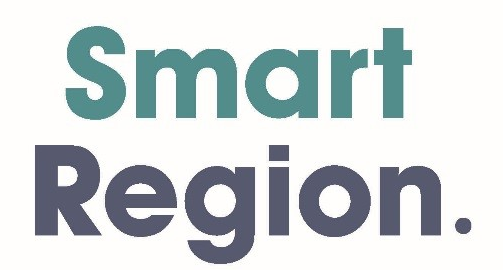What is The Difference Between Digital PR and Traditional PR?
Not that long ago PR was just that – PR. However, modern marketing is continually developing, and technology keeps advancing. PR has had to transform. It took on new shapes, as well. With the introduction of Internet marketing and social media, PR split into two – traditional and digital. What is the difference between digital PR and traditional PR?
One could say that PR is simply PR. It doesn’t matter what kind it is, right? As the saying goes “any publicity is good publicity”.
But the two types of PR have many differences. Yes, they share a common goal. No matter the form, PR has the same primary objective. The goal is boosting reputation, enhancing visibility, and increasing awareness of the brand.
The main difference
While they are two peas from the same pod, traditional and digital PR take completely different approaches. They reach and interact with the target audience in different ways.
Digital PR meets the demands of the increasingly digital market. However, that doesn’t mean that there’s no room for good, old-fashioned traditional PR. While digital PR lives online, traditional PR dwells more offline.
Digital PR – the future is now
Digital PR means utilising online publications to achieve higher visibility and brand awareness. In short, the primary goal of digital PR is online visibility. However, digital PR is more than just chasing high Google rankings. It also takes a page from the traditional PR’s book.
Aside from online visibility, it also makes an effort to establish positive relationships. The two-way communication is crucial, both with the target audience and influential people in the industry. Digital PR also uses digital marketing tactics. The idea is to project an image of credibility, trustworthiness, and reliability.
The primary goal of digital PR
The primary goal of digital PR is raising awareness. It’s all about promoting positive customer engagement and publishing positive information about your brand online. Coincidentally, that’s precisely where people are looking for said information. Handy, no?
However, digital PR entails more than just publishing info. A digital PR agency has to have a vast knowledge of Internet marketing tactics. They also have to find a way to use them in a natural, effective way.
SEO and online visibility
The staple of Internet marketing is, of course, SEO. Without SEO, you might as well be shouting at the walls – no one will hear you. Digital PR makes sure your company’s website ranks well. It makes sure that your message reaches potential customers and attracts much-desired traffic. Optimising content to secure high visibility is the number one job of digital PR.
But, it’s not just the search engines you have to please. Digital PR has to make sure that your content has an impact on the audience, as well. You have to have great content to maintain great public relations. It’s simple. Digital PR ensures that your brand is perceived as an industry leader.
Other internet marketing strategies, such as link building, also fall under the area of digital PR.
Interestingly, the modern world of social media has enforced another principle of digital PR. Now, establishing a positive, constant social media presence is critical. Social networks offer an abundance of opportunities for positive PR, not to mention that they are a way to bring your brand closer to the target audience. They offer a chance to evoke feelings of loyalty and devotion.
Another key difference
Another difference lies in the way you can measure the success of a campaign. You can easily track the progress of a digital PR campaign with tools like Google Analytics. You can determine key performance indicators in a digital PR campaign. Therefore, you can measure your success more easily. You can track traffic increase, keywords, and search engine rankings, all of which will help you determine if the campaign is successful or not.
Traditional PR tends to look literally at how many newspaper/media mentions we got as a measure of its success.
Traditional PR – an oldie but a goodie
As mentioned, traditional PR focuses on offline visibility. Instead of reaching out to bloggers, it maintains relationships with media houses. It focuses on offline in the main, things like events, sponsorships, trade shows, etc.
But if you think that traditional PR is outdated, you’re sorely mistaken. There’s nothing like a good, old press release!
Although it still dwells in the offline land, traditional PR recognises the importance of the Internet. After all, both print and broadcast media moved online ages ago. So, traditional PR has had to adapt, as well.
The main principles of traditional PR
Traditional PR still has the same goal as digital PR. It aims for reputation management, brand visibility and awareness, and audience engagement. Digital PR will hook your blog section up with some high-authority backlinks. Meanwhile, traditional PR will publish your profile in a magazine. Furthermore, they’ll utilise the media to your advantage. That means launching press releases and getting positive reviews published in the papers. Traditional PR will even make sure that you have a positive presence in the publications and places that matter to your business.
Direct and unapologetic
Yes, traditional and digital PR overlap. However, traditional PR will always have a more forceful, direct approach. Forget authority links! Traditional PR will get you a placement in a prominent publication. It has a more “in your face” attitude towards promotion and marketing.
And methods of tracking success are different. You can’t track your achievements as easily as with digital PR. It’s not like you can figure out how many customers you got thanks to that magazine profile, right?
So which PR approach should I take?
You can’t discard either approach. Both have benefits and pitfalls. PR tactics should really work together and be interdependent. So, rather than taking your pick between them, use them in conjunction. Even if you’re more inclined toward one type of PR, you should appreciate both. A strategy that incorporates methods from both will most likely make your brand more visible. Increase both your online and offline presence. That’s a sure way to spread your reach and build your reputation.
Finally, keep in mind one more thing. As your reach and awareness of your brand spreads, it will be more difficult to control what people say about you. Thus, it’s crucial to maintain quality relationships with influencers from both worlds – online and offline.
Over to you now. What has worked for you for PR for your business? Are you digital or traditional or both? Tell us in the comments below.
Source: business-achievers.com




